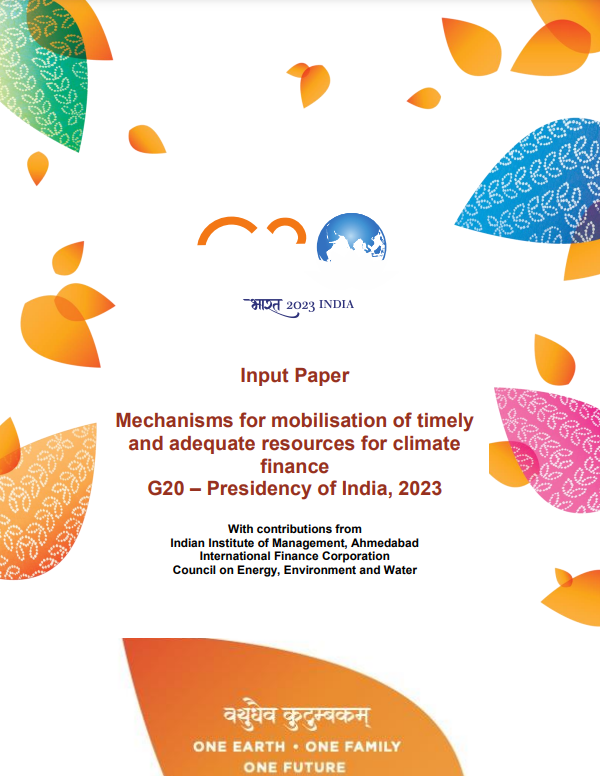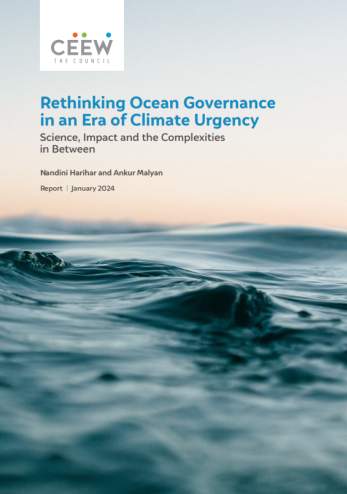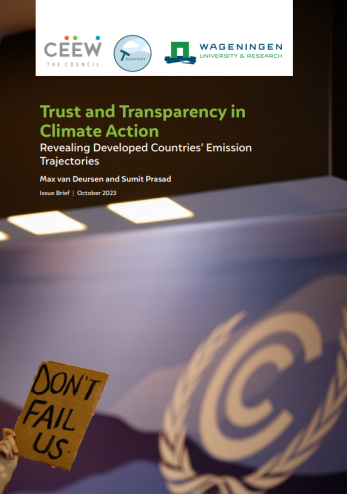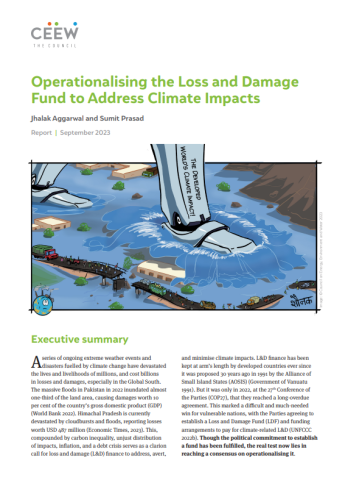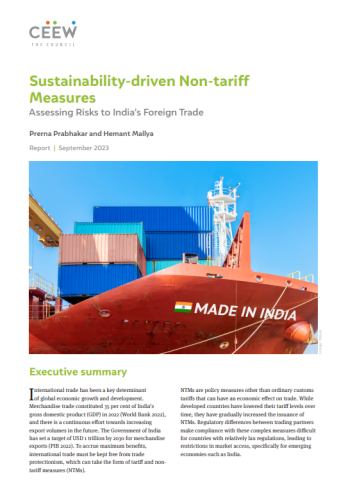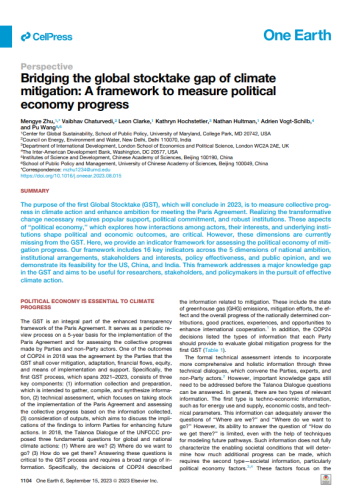Other Publications
Mechanisms for Mobilisation of Timely and Adequate Resources for Climate Finance
Indian Institute of Management, Ahmedabad, International Finance Corporation, Council on Energy, Environment and Water
June 2023 | International Cooperation, Sustainable Finance
Suggested citation: Indian Institute of Management, Ahmedabad (IIM-A), International Finance Corporation (IFC), Council on Energy, Environment and Water (CEEW). 2023. Mechanisms for Mobilisation of Timely and Adequate Resources for Climate Finance.
Overview
Estimates of resource requirements for climate action to meet the goals of the Paris Agreement suggest that trillions of dollars per year are needed in the medium to long term. Global climate finance flows have not kept pace with these requirements and existing flows remain inadequate in both scale and type in addressing the climate finance needs of developing countries. Given the scale of investments needed, public capital has an important role to play in crowding in private investments for climate action. At the same time, given the developmental challenges faced by developing countries and their increasing debt vulnerabilities, international public capital channelled through institutions such as multilateral development banks (MDBs) will have a key role to play in unlocking private investments.
This input paper to the G20’s Sustainable Finance Working Group (SFWG) outlines a spectrum of instruments already in existence that could be utilised to mobilise finance for mitigation and adaptation. It also proposes measures for accelerating the flow of climate finance.
Key Highlights
The paper elaborates on the following set of instruments that are either already used or could be useful for mobilising climate finance.
- Grants: These do not impose any financial obligation on the recipients.
- Concessional finance: This is finance provided at below market rates.
- Equity funds: These refer to investments in equity securities of companies to advance mitigation or adaptation activities.
- Structured funds: These comprise multiple equity tranches, characterised by varying levels of investment risk.
- First-loss capital: First-loss capital takes a junior role in the cash flow waterfall and acts as a catalyst to crowd in private investment.
- Sustainability-linked loans/bonds: These instruments are used to raise capital whose terms are linked to pre-defined sustainability key performance indicators (KPIs).
- Syndicated loans: Loan syndication allows for spreading of risks across multiple lenders.
- Guarantee: The entity providing the guarantee bears partial or total loss in the event of default.
- Securitisation: This refers to the issuance of asset-backed securities against a pool of underlying assets such as green loans.
- Low carbon investment trusts: These allow initial investors to offload operational assets to less risk-averse investors.
- Green bonds: These are fixed-income instruments that are used to raise debt capital which is earmarked for climate or environmental projects.
- Green loans: This is a loan raised for eligible green projects.
- Risk sharing facility: Typically offered by development finance institutions, these facilities help mitigate risks for local financial institutions through guarantees, co-financing etc. Other risk sharing facilities could also target non-project specific risks (e.g., currency, offtaker, political).
- Insurance and reinsurance mechanisms: By providing second-loss guarantees to re-insurers, MDBs can help enhance the capacity of local institutions to insure climate risks.
- Credit default swaps: If offered on concessional terms, these instruments can incentivise debt financiers to provide capital on superior terms.
Recommendations
While the aforementioned instruments exist, their current application does not mobilise climate finance at the levels required. The following are some proposed measures for mobilising climate finance at pace and scale.
- Enhance the scale of concessional finance to fund de-risking instruments: International development finance institutions such as MDBs should tap new sources such as philanthropies as well as enhance their own capacities to deliver concessional finance to fund more de-risking instruments that crowd in private capital.
- Deploy structured funds at scale: Collective investment vehicles with multi-tiered equity structures can be an effective means of mobilising private investments if MDBs take up junior positions in the cash flow waterfall.
- A Global Clean Investment Risk Mitigation Mechanism (GCI-RMM) that pools risk across projects and geographies can lower the cost of mitigating non-project specific risks (currency, offtaker, and political).
"A Global Clean Investment Risk Mitigation Mechanism that pools risk across projects and geographies can lower the cost of mitigating non-project specific risks."




